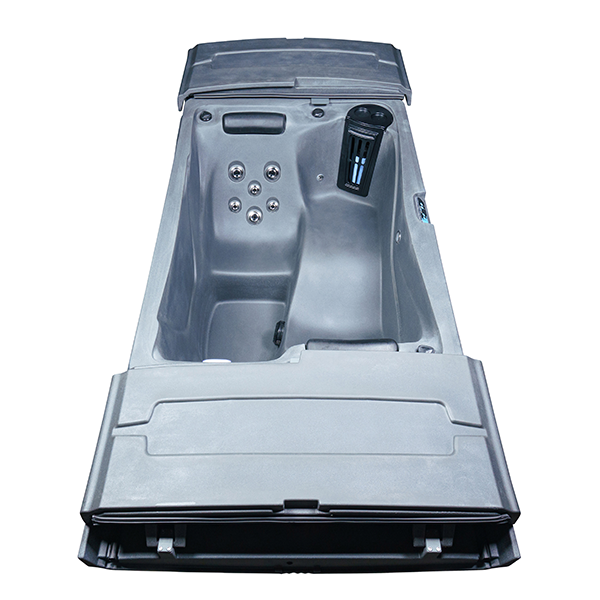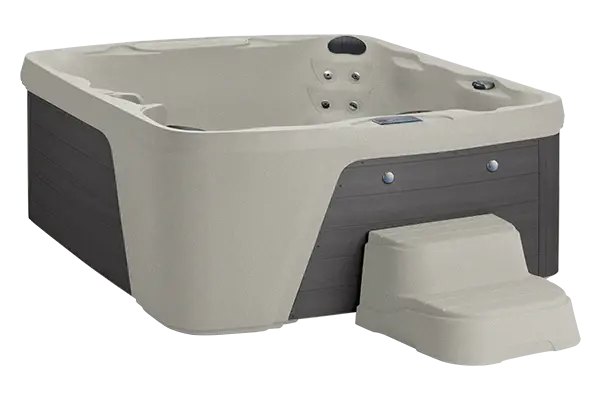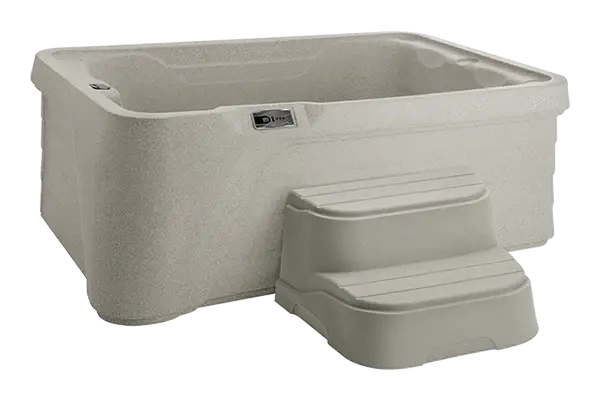

Have questions?
Looking for additional guidance on how to get the most out of your hot tub experience? Check out our YouTube channel for helpful videos and tutorials. If you still have questions, visit our FAQ page or contact us anytime for more information.
Hot Tub Buyer's Guide
Hot Tub Buyer's Guide


Hot Tub Buyer Guide - Jets- Which hot tub has the best jets? What is the best hot tub?

Hot Tub Buyer Guide - Sound- Which hot tub is the most quiet? What is the best hot tub?

Hot Tub Buyer Guide - Shell Quality - What is the best hot tub? #1 hot tub, highest rated hot tub

Structure
The industry employs various methods, each with its own set of advantages and drawbacks. A top-tier construction method uses steel frames, typically galvanized, for enhanced durability. Galvanized steel frames exhibit resistance to rust and offer significantly greater strength than standard wood frame constructions. Hot tubs constructed with steel frames often have a lifetime structural warranty, ensuring prolonged longevity and reliability. In contrast, wood frame constructions are prone to rotting, warping, and decay over time, especially in moisture-prone areas, resulting in structural problems and a notably shorter lifespan, typically three to seven years. Plastic frame constructions represent a middle ground between wood and steel, providing better durability than wood but lacking the strength and stability of steel. Nevertheless, they still exhibit some degree of movement and instability. Traditional wood frame constructions lack the robustness and longevity of steel frames, with boards susceptible to rot and loosening over time. Additionally, the absence of pressure treatment in many wood frame models increases the risk of decay. Therefore, prioritizing steel frame construction ensures optimal durability and reliability when considering a hot tub.

Insulation
When choosing a hot tub, insulation is a crucial consideration. Companies adopt various insulation methods, but we endorse the Northern Exposure Insulation System. This system employs wraparound insulation that envelops the entire hot tub perimeter, effectively trapping heat. It incorporates copper reflectix to redirect heat into the tub and an extra layer of Thinsulate fleece, similar to premium jackets, ensuring enduring insulation performance. Notably, this system reduces energy costs and promotes environmental sustainability through recycled blue jeans and cotton fibers and excels in serviceability. Unlike many hot tubs with inaccessible insulation, our design facilitates easy access to all sides of the tub, simplifying repairs and maintenance. In contrast, alternative methods like partial foam insulation, which only covers the shell and plumbing without filling the cavity, may be less energy-efficient and pose challenges for service due to concealed issues. Full foam insulation, while initially efficient, can become waterlogged over time, resulting in increased weight and difficulty locating leaks for repair. Additionally, repairing a full foam hot tub often involves costly and labor-intensive procedures comparable to working on a car with a welded-shut hood. Therefore, it is crucial to prioritize accessibility and ease of maintenance when purchasing a hot tub to ensure your investment's long-term enjoyment and serviceability.

Jet Quality
When contemplating the acquisition of a hot tub, meticulous attention to the tub's jets is imperative. Contrary to popular belief, the sheer number of jets is not the most critical factor; instead, emphasis should be placed on the quality and strategic placement. Larger volume jets contribute to superior water flow and more effective massages, alleviating discomfort. However, smaller jets may inadvertently create excessive pressure in concentrated areas, leading to pain. Equally significant is the strategic positioning of the jets; they should target key muscle groups to provide optimal relief. Certain hot tubs offer distinctive features, such as foot massage systems and jets targeting the lower back and hips, addressing common tension areas. It's noteworthy that jet design and quality vary among different brands and models. Furthermore, some models allow for jet customization, while others feature pre-set configurations. When selecting a hot tub, prioritizing jet quality and strategic placement proves essential over sheer quantity.

Pans
When searching for pans for hot tubs, we recommend opting for an ABS Pan strategically installed at the tub's base to rest on various surfaces like the ground, deck, concrete pad, or pavers. The distinctive feature of this pan lies in its curved design, wrapping around the bottom and curving upward. This curvature serves a crucial purpose in thwarting access to the hot tub interior by various critters such as chipmunks, mice, squirrels, snakes, and skunks. Furthermore, it minimizes air infiltration, especially in deck installations, by forming a seal against the ground or platform. This sealed tray is commonly found in high-end hot tub models throughout the industry, delivering an additional layer of protection and reassurance. While not all hot tub brands incorporate this feature, it is a vital consideration for those in the market for a hot tub, as it aids in preventing critters from causing damage or electrical issues. Approximately 20% of hot tubs in the industry include this sealed tray, making it a valuable feature to prioritize in your hot tub search.

Sound
The noise level is another vital factor before investing in a hot tub. When assessing a hot tub, listening to the unit in action is crucial to gauge its sound output accurately. Removing the cover allows for a better observation of the hot tub's operation, revealing minimal noise as the water circulates. Various hot tub models exhibit different noise levels, often quantified in decibels (dba). Certain brands may generate significantly louder noises, causing disruptions, mainly if the hot tub is near living spaces. Elements such as motor quality, insulation, and venting systems contribute to these variations in noise levels. Therefore, it is advisable to thoroughly assess the hot tub's operational sound before finalizing a purchase.

Filtration
Filtration is a crucial consideration in the hot tub industry, featuring distinct approaches. Two primary methods, the Smart System and circulation motors, warrant discussion. The Smart System functions automatically for two hours in the morning and two hours in the evening, circulating water about 24 times daily. This system ensures extensive water movement across the top, bottom, and through the filter door, facilitating thorough filtration with a low energy cost of approximately three to four-kilowatt hours per day. On the other hand, some companies employ circulation motors that run continuously, drawing a similar amount of energy. However, these motors typically power a single jet, resulting in less water circulation than the Smart System. Despite this disparity, both methods effectively filter the water, with the circulation pump cleaning the water approximately 16 times a day. One advantage of the Smart System lies in its capacity to extend the lifespan of the main pump motor by allowing it to cool down during periods of non-operation. In contrast, continuous operation can lead to premature wear and tear on the circulation motor. Ultimately, choosing these filtration methods hinges on individual preferences and priorities.









































